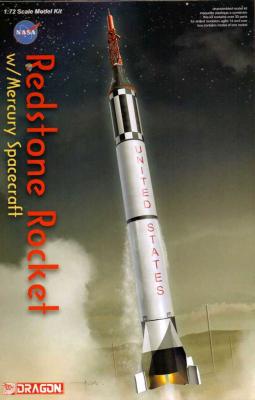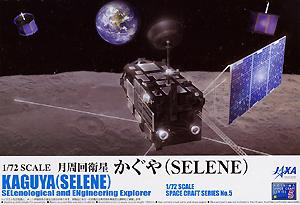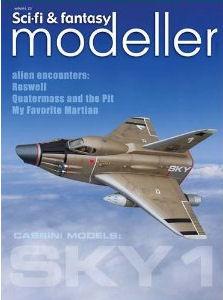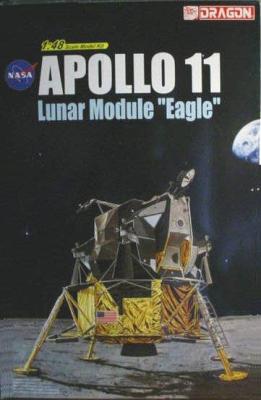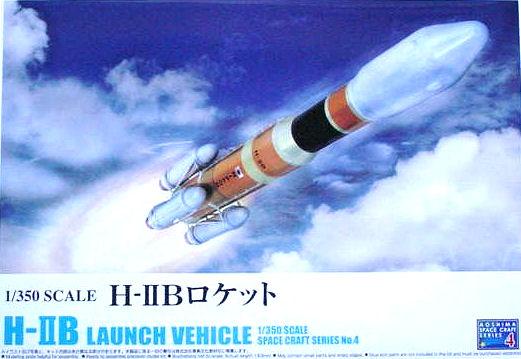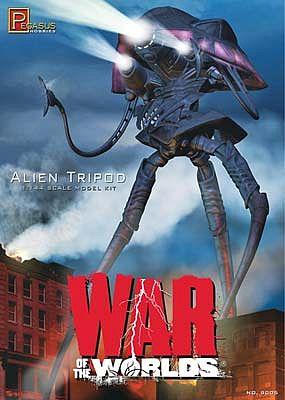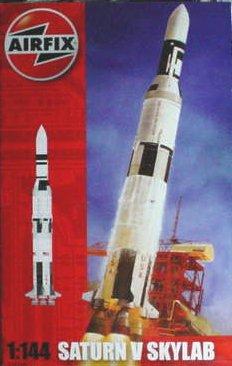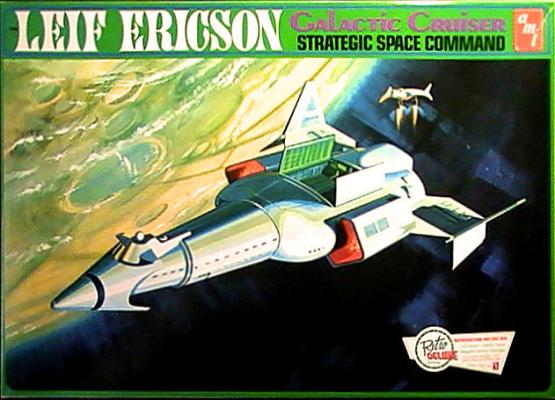The early 1960’s were characterized, in large part, by the “Space Race” between the United States and the Soviet Union to place a man in orbit, with an end goal of a manned lunar landing. Struggling to keep pace with the Soviets in those early years, the United States ultimately forged ahead, leveraging every asset at its disposal. One such asset was the Redstone rocket. Originally designed as a weapons delivery platform, the liquid-fueled Redstone was more stable and reliable than its early solid-fueled counterparts, thus making it a preferred launch vehicle for placing America’s first astronauts into space, although not into orbit. Redstone supported two manned suborbital missions in 1961 – Freedom 7, piloted by Alan Shepard, and Liberty 7, piloted by Gus Grissom – prior to the introduction of the more powerful orbit-capable Atlas rocket.
Reviews of products for scale space and science fiction vehicle models.
A little history
This Aoshima kit represents a spacecraft that was launched at 10:31 a.m., Sept 14, 2007, from the Tanegashima Space Center. The launch vehicle was an H-IIA, the subject of another Aoshima kit, (Aoshima 151-23000). The spacecraft was named “Selene” which is a representation of the descriptive phrase, “Selenological and Engineering Explorer”.
This is the second volume of this magazine I have read since they changed to a quarterly format and I do like the amount of detail crammed into it. This issue is made up of 13 articles focusing on kit builds, scratchbuilds, and other fun stuff, so let’s get to it.
The first two builds are Bat-related kits by Polar Lights. These are the 1/25th scale Batboat from the old TV series and the 1/32nd scale Batmobile from the same show. These are basic, no frills builds resulting in two smart-looking vehicles.
Next up is a new kit from Pegasus of Uncle Martin and his Spaceship. For those of you too young to remember, this is based on the My Favorite Martian TV show. This starts with some history regarding the kit development and behind the scenes info from the show. This is followed by a full build of the kit. The 1/18th scale kit builds up nicely and includes a figure of Uncle Martin which has a very good resemblance to actor Ray Walston.
The Parts
Four Landing Probes (part # 5) are included in this kit but they are not to be found on the instruction sheet. One will notice a small slot on the underside of each of the landing pads. If one is going to display the LM in-flight, then the probes can be attached by using that slot. There are also two Egress Platforms, one to be used in the deployed position and I assume the other to be used for the in-flight position. The difference between the two parts is the angle between the locating pin on the undersurface of the Egress Platforms and the locating pin itself. Interestingly, if the model is to be displayed in the in-flight position, some surgery will be required on the landing gear.
The H.IIB Launch Vehicle by Aoshima is a great little kit. When mounted on the display base provided in the kit, the model measures just shy of 6 inches in height. The display base has a small footprint, measuring about 2 inches by 4 inches. The completed project will not consume much volume in your model display case.
While the space required for display of the H-II is very small, the eye appeal of the finished model is quite large. The color scheme is dramatic, as is the shape of the vehicle and payload shroud.
The H-II features four SRBs attached to the main rocket body, with a payload shroud topping off the full stack. The rocket nozzles are molded as single pieces while the SRBs, payload shroud, and main rocket body are molded in “right/left” halves.
This model is from an Anime series originally called “Sentō Yōsei Yukikaze” which appeared in Japan as a direct-to-video production. It was produced by Gonzo and Bandai Visual (A familiar name to modelers). The videos won awards in Japan for best animation in 2003 and 2006. An English version of the video is available.
The premise of the story is that Earth will be invaded in the mid 21st Century by an alien force called JAM, through an interdimensional portal which comes out near Antarctica. The UN puts together a secret force which pushes the invasion back through the portal. The UN force then follows JAM through the portal to its home world, which is called Fairy. The battle continues on Fairy using several aircraft with some real upgrades from what we see in the early 21st Century. More information can be found at its Wikipedia page .
These models are from an Anime series originally called “Sentō Yōsei Yukikaze” which appeared in Japan as a direct-to-video production. It was produced by Gonzo and Bandai Visual (now, there’s a familiar name!). The videos won awards in Japan for best animation in 2003 and 2006. An English version of the video is available.
The premise of the story is that Earth will be invaded in the mid 21st Century by an alien force called JAM, through an interdimensional portal which comes out near Antarctica. The UN puts together a secret force which pushes the invasion back through the portal. The UN force then follows JAM through the portal to its home world, which is called Fairy. The battle continues on Fairy using several aircraft with some real upgrades from what we see in the early 21st Century. More information can be found at https://en.wikipedia.org/wiki/Yukikaze_(anime).
Steven Spielberg's 2005 remake of War of the Worlds took the original 1953 version and upgraded the already excellent special effects using today's technology. In my opinion, the movie was okay, but the effects were excellent, and central to that were the Martians and their tripods. Pegasus Hobbies has already issued the Martians and has now followed up with this kit of the tripod. And what a kit it is!
The kit is 93 parts including an excellent base of a destroyed street and buildings. The capture cages and lenses are clear. The top of the tripod is smoky clear. All the parts are perfectly molded, with no flash and petite engraving. There is an option of building the kit with the laser arms attached as it is first seem in the movie or building it with the cages underneath the back end and the eight tentacles coming out. I chose the former for this build as I love the look of the arms/claws protruding from the top.
The Parts
Airfix has upgraded their original Apollo Saturn V kit (1991) to a Saturn V Skylab Launch vehicle with the additional of a new sprue. This new sprue provides the parts needed to represent the Saturn V in its Skylab launch configuration. The lab, itself, is not provided in the kit beyond the basic cylinder which make up the lab components that could be seen by the viewer during the rollout and launch of the Skylab mission.
This release also provides the CSM launch shield and escape tower, as well as a LEM. These are the old, original parts and even though there are some “scale” issues with the CSM it allows one to build a decent Apollo Saturn V from the parts contained in the Skylab kit.
Introduction
In 1968, in the first peak of the AMT Star Trek model series, AMT released the Leif Ericson Galactic Cruiser as a start to an intended line of original, AMT-designed sci-fi vehicles. Each ship was to have a story, including key characters. The ship was designed by Star Trek's Enterprise designer, Matt Jeffries. The Leif Ericson was a sci-fi modeler and fan-favorite even then.
In the summer of 2011, AMT re-released the Leif Ericson with its original box art design, with parts cast from the original molds (reviving the clear parts) and an updated Light Emitting Diode (LED) kit.
My thanks go out to AMT for providing this kit for review and to IPMS USA for letting me do the review.

